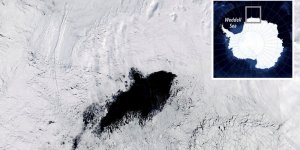| News / Science News |
How mosquitoes detect people
NIH | JUNE 21, 2014
Researchers discovered a receptor that mosquitoes use to detect both carbon dioxide and skin odor, and they identified compounds that interact with the receptor. The findings may help guide strategies to control mosquitoes and the diseases they transmit.

Aedes aegypti feeding on a human. Centers for Disease Control and Prevention USA
Mosquitoes have an amazing ability to zero in on us from afar and head straight for our bare skin. Unfortunately, mosquitoes are much more than an itchy annoyance. They transmit several serious diseases including malaria, one of the most common infectious diseases in the world. Nearly 1 million people die of malaria every year. Mosquitoes also transmit Dengue viruses and filarial worms.
Female mosquitoes have nerve cells called cpA neurons that have a receptor to detect carbon dioxide. This enables them to sense the plumes of air we exhale.
But mosquitoes are still attracted to human skin even in the absence of carbon dioxide. A team of researchers led by Dr. Anandasankar Ray at University of California, Riverside, set out to determine the neurons and receptors required for attraction to skin odor.
Brief exposure to a chemical that shut down the mosquitoes’ carbon dioxide receptor rendered them unable to react to carbon dioxide from exhaled breath. The scientists tested the response of these mosquitoes to skin odorants by placing them in a wind tunnel with a plate of glass beads that had been worn in socks for several hours to give them the scent of human foot odor.
Both Aedes aegypti and Anopheles gambiae mosquitoes—which transmitdengue and malaria respectively—were much less attracted to the scented beads after being exposed to the chemical. These results showed that the receptor responsible for detecting carbon dioxide also detects skin odorants.
Chemicals previously known to block mosquitoes’ carbon dioxide receptor can’t be used around people because of unpleasant odors and health safety concerns. To identify more suitable compounds, the team developed a computer simulation method to screen almost half a million chemical compounds in search of structures that might interact with the receptor. They identified 138 compounds that were pleasant smelling, inexpensive, and considered safe for human use.
The researchers focused on 2 of the compounds recognized as safe for humans. Ethyl pyruvate, which has a fruity smell and is approved as a flavor agent in food, blocked attraction of mosquitoes to a human hand. Conversely, cyclopentanone, which is minty-smelling and is approved as a flavor and fragrance agent, attracted mosquitoes to a baited trap as effectively as carbon dioxide.
YOU MAY ALSO LIKE




